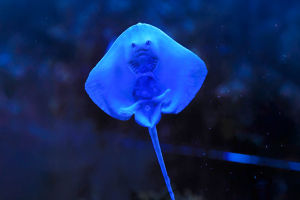Hello, Lykkers! If you've ever seen a sea lion perform tricks at an aquarium or zoo, you know just how adorable they are. Their playful antics, curious eyes, and clumsy movements make them incredibly lovable.
But as much as we enjoy watching their entertaining performances, have you ever wondered what life is really like for these charming creatures? In this article, we’ll explore the adorable nature of sea lions and take a deeper look at the challenges they face behind the scenes.
All About Sea Lions for Kids: Sea Lion Facts and Information for Children - FreeSchool
video by Free School
Sea Lions: The Masters of Charm
It’s impossible not to be smitten by sea lions. Whether they’re hopping on land with their graceful flippers or leaping through the water, they have an undeniable charm. Their big eyes, curious faces, and ability to perform impressive stunts make them crowd favorites. They’re often seen balancing balls on their noses or clapping for applause. These performances make them look like playful, carefree animals, and they often steal the show at zoos and aquariums.
However, while their cute, attention-grabbing behavior might seem like they are just living a carefree life, there’s more to their story than meets the eye.
Behind the Performance: The Struggles of Trained Sea Lions
What many people don’t realize is that the life of a trained sea lion is much more complicated than it seems. The animals we see performing at shows have undergone rigorous training, often under stressful conditions. Trainers use positive reinforcement techniques to teach sea lions tricks, but the process can be long and demanding. The animals must learn to perform certain actions on cue, such as jumping through hoops or responding to hand signals, often with the expectation of entertaining crowds multiple times a day.
Although some sea lions seem to enjoy the attention and rewards they get during performances, it’s crucial to remember that captivity often takes a toll on their well-being. Sea lions are highly social creatures in the wild, and in a confined space, they can become stressed and anxious. They are not naturally inclined to perform tricks, and many spend their lives in small enclosures that don’t allow them to engage in their instinctual behaviors, like hunting for food or swimming freely.
Challenges Faced by Captive Sea Lions
Living in captivity presents several challenges for sea lions. In the wild, they roam vast areas of the ocean, forming large colonies, socializing, and hunting for their food. In contrast, captive sea lions often live in small tanks that lack the depth and diversity of the ocean. This environment can lead to boredom, frustration, and even health issues, such as obesity and musculoskeletal problems due to a lack of exercise.
Furthermore, their diet in captivity doesn’t always replicate the variety and richness of what they would consume in the wild. Sea lions typically hunt fish, squid, and other marine creatures. In captivity, their diet may be limited to fish pellets or other prepared meals that don’t offer the same nutritional balance.
Another critical issue is the impact on their social lives. In the wild, sea lions thrive in large groups, communicating and interacting with one another. In captivity, they may be isolated or housed with only a few other animals, which can negatively affect their mental health and overall happiness.
The Ethics of Sea Lion Performances
Given the challenges faced by captive sea lions, the ethics of using them for entertainment purposes have been widely debated. While it’s true that many aquariums and zoos aim to educate the public about these incredible creatures, the question remains whether it’s fair to use them for shows that demand performances.
Many animal rights organizations advocate for the end of animal performances, arguing that the well-being of the animals should take precedence over entertainment. Some countries and regions have already started to implement laws that restrict or prohibit the use of wild animals in performances. The goal is to encourage respect for animals and promote their protection rather than exploitation.
What Can We Do to Help?
As visitors and animal lovers, it’s important to be aware of the conditions under which these animals live. One of the most effective ways to support sea lions and other wildlife is to visit accredited sanctuaries and rehabilitation centers, where the focus is on conservation and providing a more natural and humane environment for the animals.
In addition, supporting organizations that promote animal rights and conservation can help bring awareness to the challenges that captive sea lions face. By advocating for better living conditions and the end of performances, we can contribute to making a positive difference in their lives.
The True Story of Sea Lions
In the end, while sea lions will always remain one of the most adorable animals to watch, we must also be aware of the challenges they face in captivity. Their playful nature and ability to entertain us should not overshadow the reality of their difficult lives behind the scenes. It’s essential that we respect and protect these fascinating creatures, ensuring they live in environments where they can thrive, just as they would in the wild.
So, next time you see a sea lion, remember to admire them for their true beauty and recognize the importance of supporting their conservation. Together, we can ensure these lovable animals continue to capture our hearts while living healthier, happier lives.
Stay curious, Lykkers, and let’s continue to learn more about the world’s wonderful creatures!


